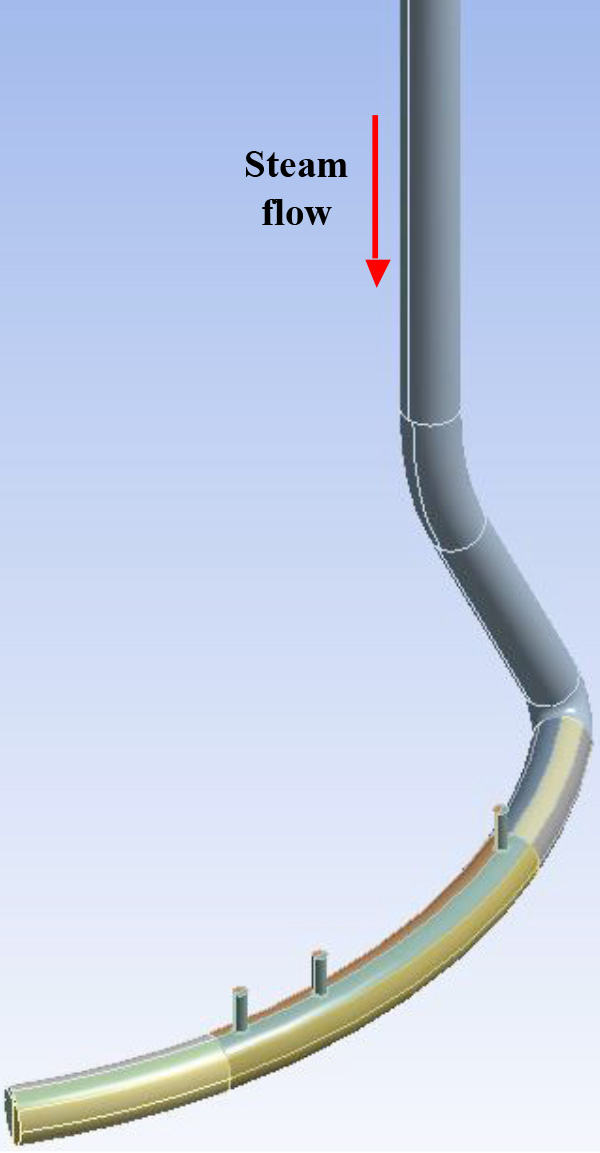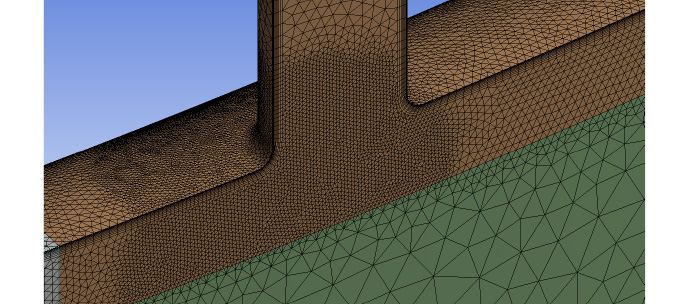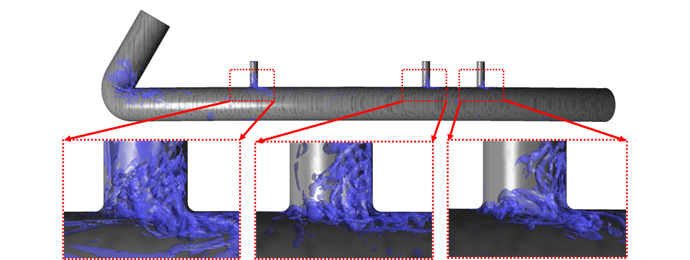Large Eddy Simulation of a Main-Steam Line in a Nuclear Plant
Objective
To calculate the pressure fluctuations due to vortex shedding at the branch-pipes in main-steam line of a nuclear power plant.
Analysis Details and Results
A detailed 3D model of the main-steam line with three branch-pipes was modeled in CFD as shown in Figure 1.
A fine inflated grid (prismatic element layers near the pipe walls) was used to resolve the boundary layer. A very fine mesh was used around the SRV branch-pipes to accurately resolve the boundary layer shear and vortices shed by the upstream round radius of the branch-pipes. (see Figure 2).
When fluid flowing through a pipe passes over a cavity, the boundary layer at the upstream edge of the branch-pipe forms a free shear layer that travels toward the downstream edge of the branch-pipe. The unstable shear layer combined with the upstream disturbances develops waves that roll into vortices. The shear layer vortices impinge on the downstream corner of the branch-pipe, causing an alternate inward and outward flow to the branch-pipe resulting in pressure oscillations. The vortices generated at the branch-pipes are shown in Figure 3.
Contact us to know more about our large eddy simulation of a main-steam line in a nuclear plant.



